Carved wooden mask depicting a stylized human face, with a high, domed forehead and exaggeratedly expressive features. The entire surface is adorned with raised vegetal motifs that emphasize the facial contours. Significant wear reveals the raw wood beneath the original black painted layer. The eyes are pierced, as is typical for theatre masks, allowing the actor to see the stage. The overall appearance suggests a male figure, possibly a deity or supernatural character from the Noh repertoire.
Noh theatre masks, originating in Japan during the 14th century, represent specific archetypes: old men, warriors, women, demons, or spirits. Each mask carries strong symbolic meaning and follows a subtle expressive code, using minimal details to convey multiple emotions depending on the angle and lighting.
4o

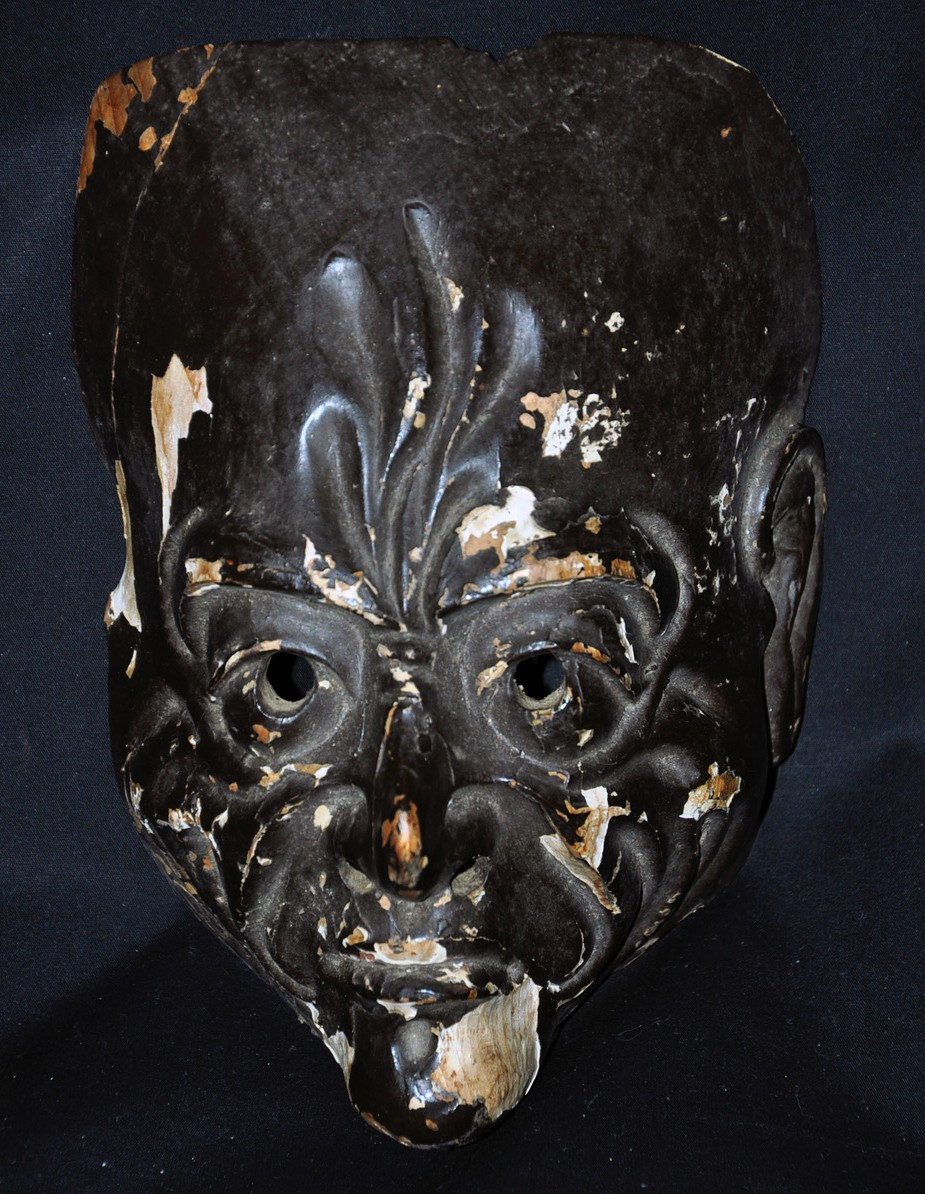
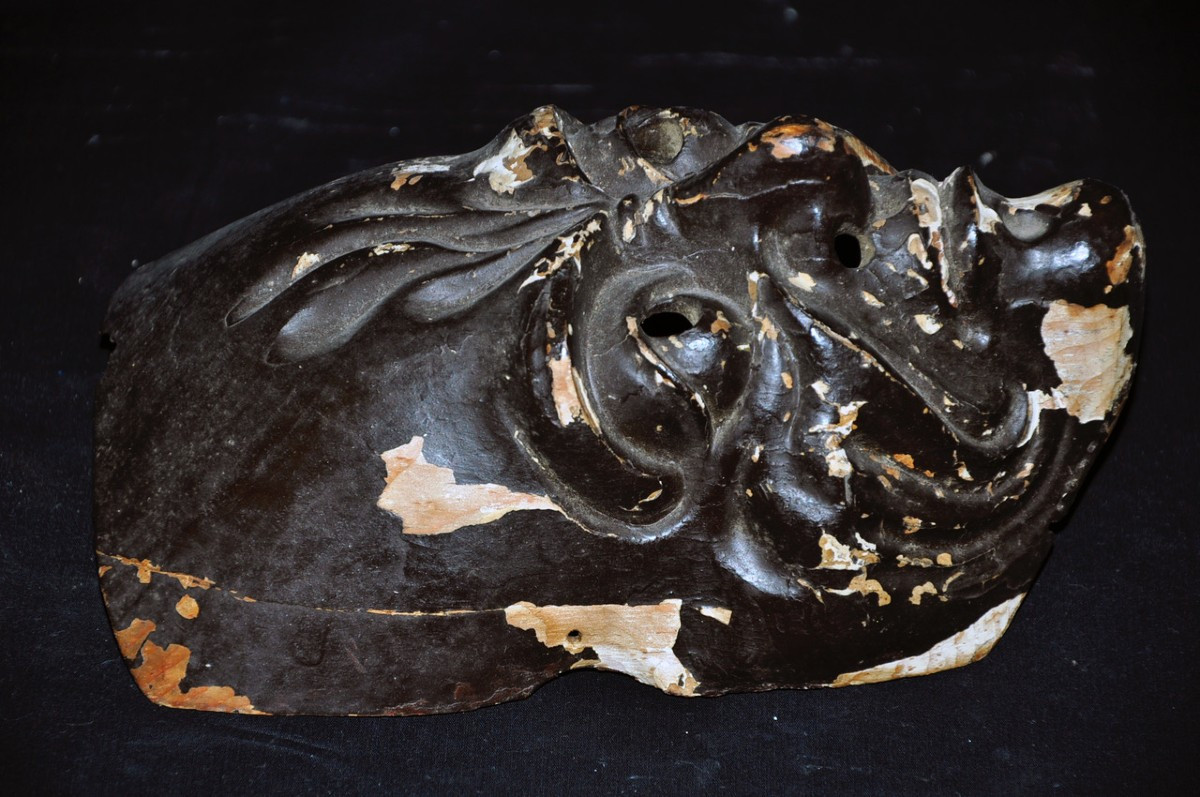
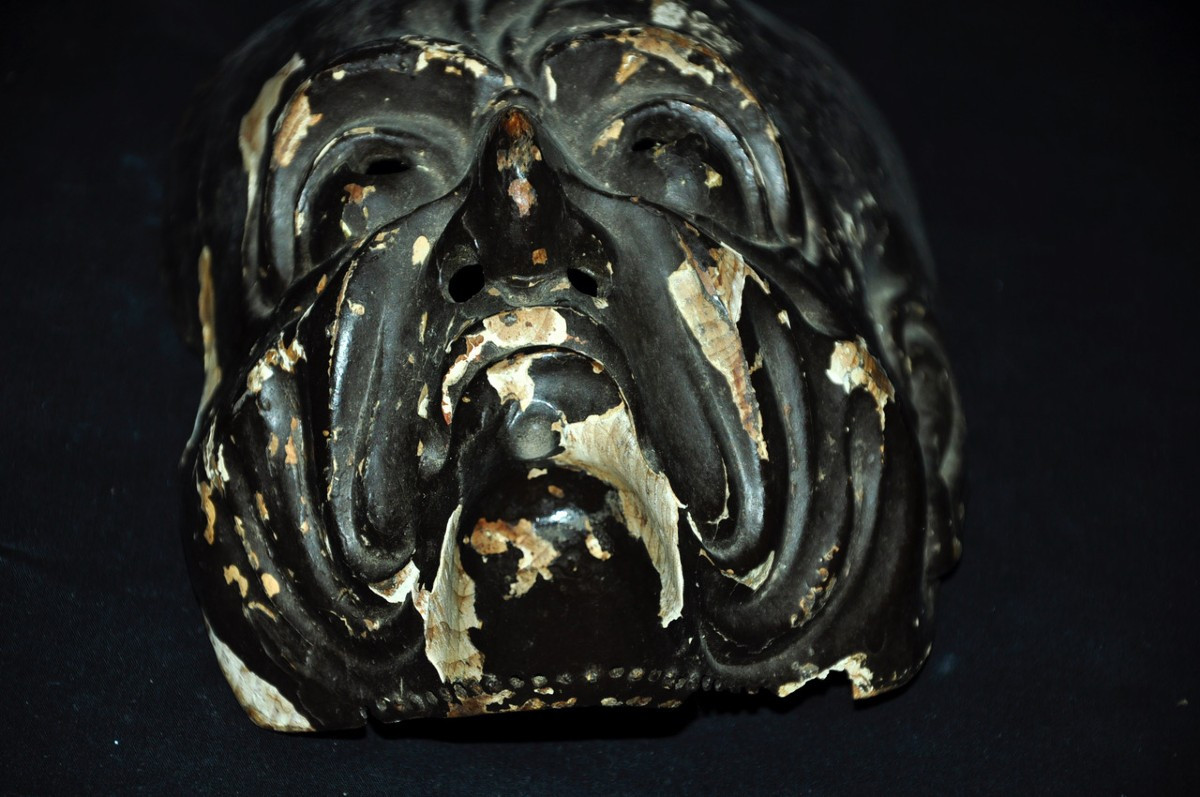
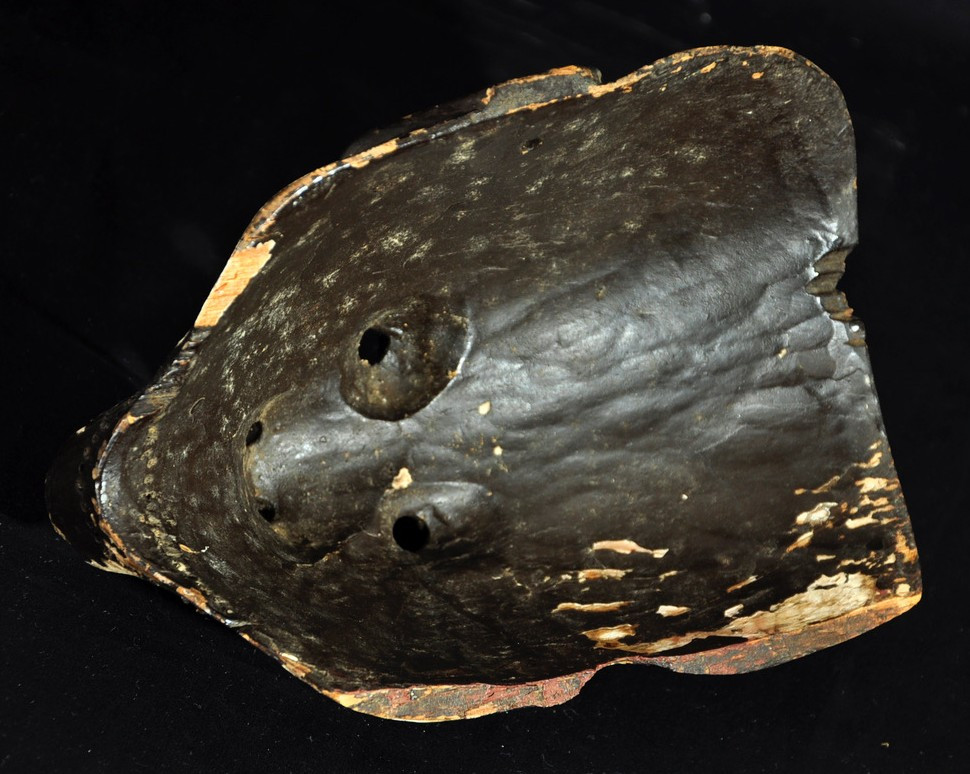





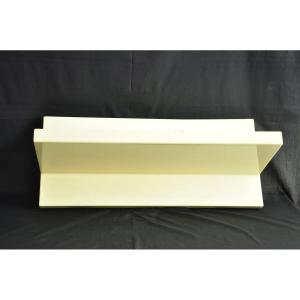














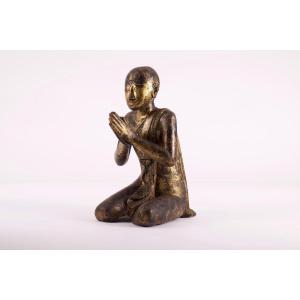
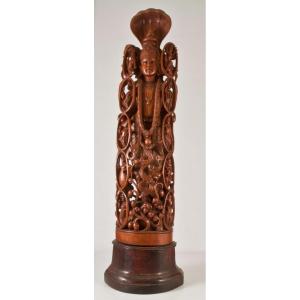


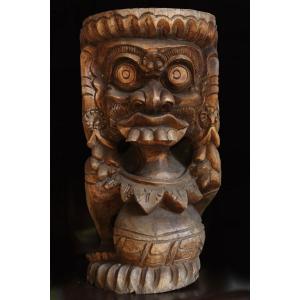



 Le Magazine de PROANTIC
Le Magazine de PROANTIC TRÉSORS Magazine
TRÉSORS Magazine Rivista Artiquariato
Rivista Artiquariato